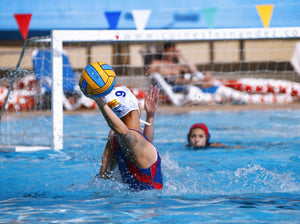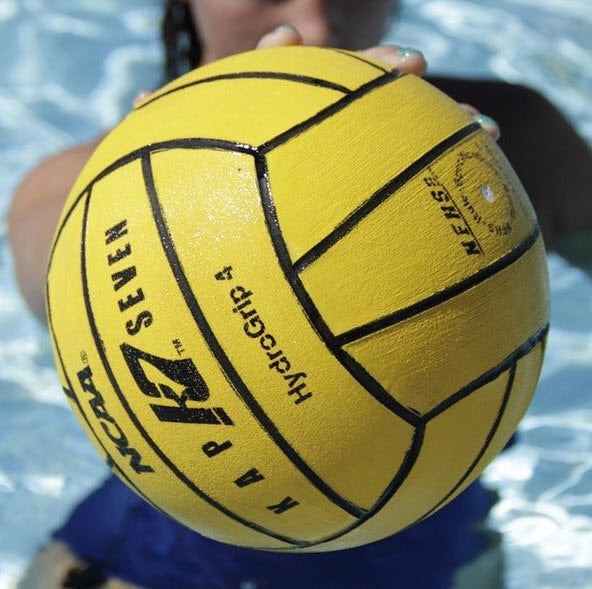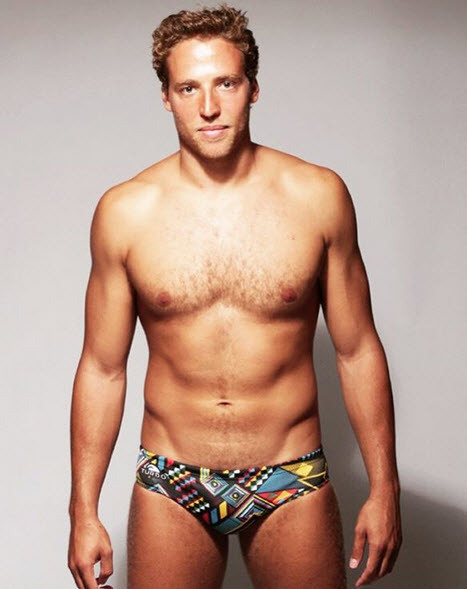How to Swim Heads-up Freestyle for Water Polo
It’s time to forget everything your swimming coaches have said about freestyle, because water polo’s version of the stroke couldn’t be more different. Rather than smoothness and streamline, this version requires choppy strokes and aggressive leg movements — ones that aren’t always the most hydrodynamic. Mastering heads-up freestyle is an important step in learning how to play water polo. Read on for everything you need to know about developing and using heads-up strokes for water polo.
Why Heads-up is Important
Heads-up freestyle allows you to move around the pool quickly while keeping your face out of the water and your eyes on the game. Although based on normal freestyle, heads-up requires a high head position, short/choppy strokes, and flutter kick. Water polo players use this stroke during drives, counterattacks, and when dribbling the ball. It’s rare that a water polo player puts their head down during a game because doing so renders them oblivious to the location of the ball and the rest of the players.
How Heads-up is Different
While it may sound simple to do (head up, swim forward), this unique stroke departs from traditional freestyle in some key ways. Below are a few important points to keep in mind to maintain proper heads-up form:
Still Head
As your arms alternate strokes and your torso shifts to the left and right, you will naturally also want to swing your head from side-to-side. While you should be able to glance to the side or back during a game, you also need be able to swim with your head still and facing forwards. Practice this by swimming while keeping your eyes on single point like the end of the lane, the swimmer in front of you, or something on deck.

High Elbows
Keeping your elbows high helps maintain short strokes, which also act as a deterrent to nearby defenders. Rather than gliding and stretching out your arms, increase your stroke tempo and minimize time spent pulling underwater. Lastly, high elbows help control the ball when dribbling.
Chin Out of the Water
Keep your head high enough that your chin clears the surface of the water. As you get tired, it will be tempting to let your head drop down, but it needs to stay high so that teammates and the ball remain visible to you. Keeping your entire face clear of the water also allows for more breathing, an aspect of the stroke that will become very attractive after a few turnovers.
Kick Harder
Physics dictates that if your head comes up, your hips go down. To combat this extra drag, kick harder than normal to keep your legs up and to generate speed.
Wide Catch
Keep your catch wide. Your hands should enter the water about shoulder-width apart. Keeping your catch wide allows for faster turnover and provides more stability in the water, which is helpful when dribbling or shooting the ball.
Heads-up Variations
Depending on the situation, heads-up may be paired with an eggbeater kick, swum with a ball, or see rapid changes in direction. You should get used to swimming heads-up in a few different ways, outlined below.

Dribbling the Ball
While dribbling, keep the ball in front of your face and between your arms. This isn’t the fastest way to move the ball down the pool (passing is), but it is important for steals, breakaways, and occasionally drives.
With Eggbeater
Certain wet or timing shots require a heads-up stroke, but an eggbeater kick. This combination creates several advantages in water:
- You can hold good body position for the shot while protecting the ball.
- The defender will have a harder time getting around you if you are eggbeatering than if you were flutter kicking.
- The quick turnover of your strokes make it hard for the goalie to predict the timing and direction of your shot.
Changing Direction
Because possession of the ball can change in the blink of an eye, it is important to be able to switch direction quickly. Do this by pulling your legs under your torso, then scissor-kicking to propel yourself in the opposite direction. This is known as a ****hip-over****.
In a popular hip-over training exercise, each whistle-blast from a coach on deck signifies a new direction for the swimmers until they reach the other end of the pool. Expect lots of hip-overs before you reach the wall. This drill is tiring, but effective.
Heads-up Backstroke
You should also master a heads-up version of backstroke. This variation of the stroke has the same differences as heads-up freestyle: Head out of the water, rapid turnover, wider catch, and a stronger kick. Usually used for shorter distances, heads-up backstroke allows players to scan the pool behind them while still moving towards their target. It can also be paired with eggbeater and scissor kicks.
Why Heads-up is Worth It
It’s obvious why heads-up freestyle is such a staple of the game. Not only does it allow you to see what’s going on in the pool around you, but it is fast, and easily adapted for specific offensive or defensive situations. Right up there with eggbeater and good ball handling, a strong heads-up is one of the most basic and important skills for a beginning player to work on. Practicing all the variations is a good way to build endurance and versatility as a player, and is also a great jumping-off point for developing new skills related to shooting and driving.



